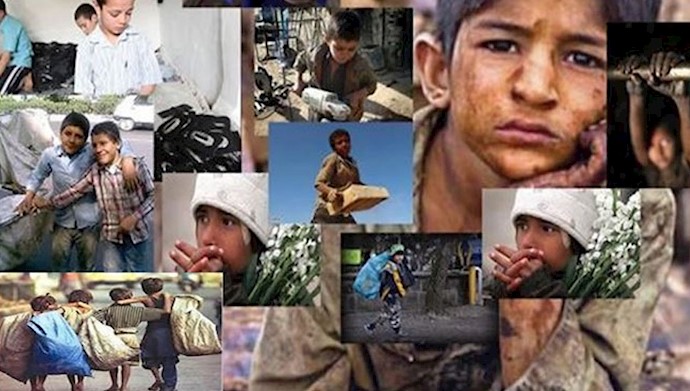Analysis by PMOI/MEK
Iran, Nov. 12, 2018 – 24 years ago, Iran signed the Convention on the Rights of the Child and has been ever since a party to it. But like many other promises and laws in Iran, the rights of children are only a shallow promise in this country.
Witnessing children under the age of 14 selling all sorts of things on the side of the street is quite common. Child labor is also used in workshops, traditional brick factories, or in weaving traditional Persian rugs.
According to the UNCRC, which sets out the civil, political, economic, social, health and cultural rights of children, child labor is defined by two main parameters: Type of labor and the minimum appropriate age for that type of labor.
In general, a type of work is considered child labor if it hinders the physical, mental, social, moral, or character health of a child. The appropriate age for any given type of labor is measured by its impact on the child’s health.
Fatemeh is a seven-year-old girl. She has to work in a brick factory for hours every day. It’s abundantly clear that this type of work harms her in a variety of ways.
According to a study published by the state-run Mehr news agency on September 26, there are over 7 million working children in Iran right now.
Studies suggest that about 45 percent of working children and minors living on the streets face the dangers of HIV, Hepatitis, and Syphilis. Symptoms like short stature and underweight caused by malnourishment. They also suffer from mental illnesses created by their social environment and amplified by a lack of proper physical health and nourishment standards. Skin illnesses, mainly through a lack of hygiene and harsh working environments are also not uncommon among child laborers.
About 10 percent of child laborers are under the age of six and 30 percent of all child laborers in Iran don’t attend school. The average age of children joining the workforce in Iran is 10 and 15 percent of them take up “professions” like begging or garbage collection.
Garbage collection is normally done in teams of two kids or more where they roam through garbage cans or depots to find valuable items like plastic wastes that are sellable. The following video is somewhat typical of what garbage-collecting children work in urban areas looks like.
25 percent of child laborers in Iran are girls, although one should keep in mind that many girls work in households where their work does not count in child labor statistics. The monthly average wage of a working child is about one-fifth of the official minimum wage in Iran, which itself is less than 58 cents per hour with the current downward spiral of the Iranian currency.
In a country ruled by corrupt mullahs, these kids are victims of a system that virtually doesn’t leave their families an option but to send them to work instead of school to make ends meet.
According to ISNA news agency, 63 percent of these children in Tehran are hawkers selling inexpensive items on the streets and 6 percent of them collect garbage and waste. 24 percent of these kids’ parents are ill and 31 percent of them are unemployed.
Being a hawker of minor age in Iran is nothing like in Europe or the U.S. In addition to not attending school, malnourishment, and illiteracy, these kids face far worse dangers.
ISNA reports that the HIV virus, addiction, depression, self-harm, suicide, all types of sexual harassment and arbitrary violence are common dangers that child laborers face.
A common “profession” for these children is working for contractors of the municipality who work them in garbage collection.
On August 1, ILNA news agency quoted Tayebe Siavoshi, a member of Tehran’s municipality council saying that “there is an organized effort to move immigrants” from the border to the capital and these gangs “squeeze more than 20 kids of ages 9 to 10 in a car and bring them to Tehran. These kids work for the municipality contractors in waste collection or in waste recycling workshops.”
“Reports suggest that the situation of garbage-collecting children is very harsh. These kids fall ill, are infected with the HIV virus and are buried in the very waste-collection areas,” she adds.





